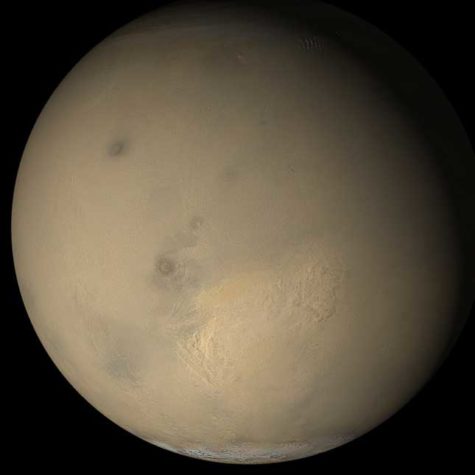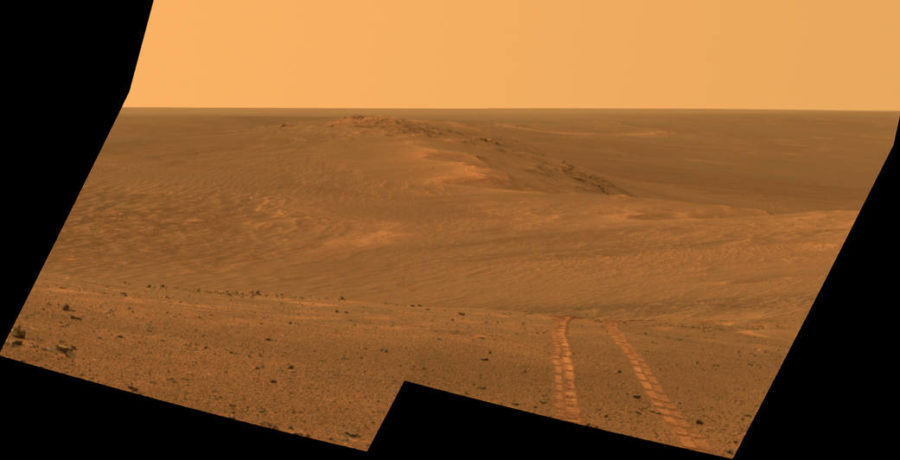Mars Sandstorm, Saturn’s Aurora, Pence Speaks
September 10, 2018
Sandstorm settling on Mars

Since May 30, a sandstorm has been raging on Mars, resulting in its being entirely covered in a brown haze that has made it difficult to view the planet’s surface. Even more problematic though is that the rover Opportunity has no sunlight to power its solar panels, resulting in its going offline. All communication with the rover has been cut since then, leaving the Opportunity Mission team listening and waiting.
But recently, the sandstorm has finally started to settle, giving the team hope that Opportunity will start to function again soon and make contact. “The sun is breaking through the haze over Perseverance Valley, and soon there will be enough sunlight present that Opportunity should be able to recharge its batteries,” said John Callas, Opportunity project manager at NASA’s Jet Propulsion Lab.
If the rover does not make contact within 45 days, the team will conclude that the Martian dust or the cold caused a fault within the rover or damaged the solar panels.
Mike Pence NASA Speech

On August 23, Vice President Mike Pence made a speech at Johnson Space Center, discussing the plans of NASA and President Trump to return to the moon with the intention to stay as a gateway to further exploration and advancement in space.
“The time has come to really believe… to take what we have learned over these so many decades,” Vice President Pence said. “Put your ingenuity and creativity to work and establish a permanent presence around and on the moon.”
He said the decision to cancel the Constellation program, which would have brought the U.S. back to the moon by 2020, was a mistake, but the days of seeing Mars as just a mirage were over. “America will lead mankind to the stars once again.”
“And let me say to all of you, and all of those that might be looking on. The most important work and the best days for Johnson Space Center are yet to come”
Auroras on Saturn

On August 31, the Hubble managed to catch a magnificent sight of auroras on Saturn. The space-based telescope has aided in the observation of the auroras of Saturn since 2017, but just now it has received these final and amazing views of the spectacle that has been happening on Saturn.
Whereas auroras of Earth are a result of solar winds that interact with charged particles in our magnetosphere, Saturn’s auroras have patches that are generated from an unknown source. “Saturn’s unique auroral features are telling us there is something special and unforeseen about this planet’s magnetosphere and the way it interacts with the solar wind and the planet’s atmosphere,” said Nick Achilleos, scientist at University College London, in a Journal Nature paper.
The strange nature of some of Saturn’s auroras, which don’t fit either category of aurora, such as Jupiter’s main auroral ring which keeps a constant size, and Saturn’s main auroral ring that constantly changes size due to extreme winds, provides a mysterious spectacle to gaze upon.


